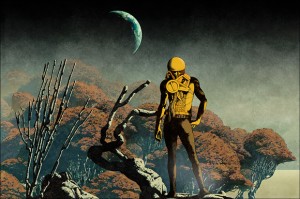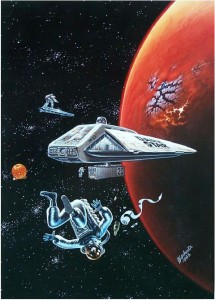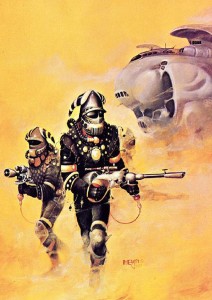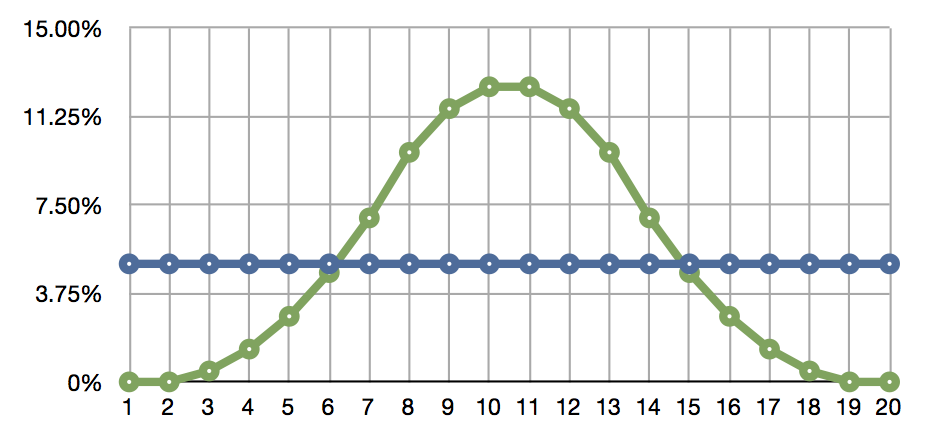 So I promised an update on the various projects on the block and I thought I’d start with one folks have asked me about recently: VOID (Vanguard Operations in Interminate Darkness), formerly known as Void Hunters (which I found was already taken by a computer game, unfortunately).
So I promised an update on the various projects on the block and I thought I’d start with one folks have asked me about recently: VOID (Vanguard Operations in Interminate Darkness), formerly known as Void Hunters (which I found was already taken by a computer game, unfortunately).
After having gone back and rewritten the mechanics from the ground up, I have started to type out the formal text for the demo version of the game. The character creation chapter is now complete, and I’m going back over it today to make sure everything is in order before moving on to Chapter 2, which covers the basic rules. Once those are done, I’ll create a set of Pregen 1st level characters, equipment & Psionic Power cards and a starter adventure and lay the whole thing out before placing it up for grabs on my RPGNow account. Then we’ll see what folks think of it.
My long term plans include finishing writing the full text within the next three months and then converting the whole kit and kaboodle into a basic Digital Table-top RPG for mobile platforms. If I can find an artist, I’ll release a PDF version as well.
As for the design, there have been major changes. I still want to keep that DCC feel, but I wanted to start over mechanically to make a system for sci-fi, not to shoe sci-fi into an existing fantasy system. So there is still a ‘funnel’ in the game, for example (which is called a 0 Level Mass Conversion, to give it that sci-fi feel). I have also retained the classic d20 structure of Attributes, Levels, Hit Points and Saves, but the way these are all realized mechanically is structurally different.
d20 BECOMES 3d6
One of the first major changes was to move from the eponymous d20, with it’s flat probability line, to the 3D6, with it’s glorious bell curve.
I did this for numerous reason, but one of the main ones involved the weight of attribute modifiers. In a d20 game, a +1 is not really all that important when it comes to comparing two characters. It is much more consistently significant in a 3d6 system, however.
Changing to 3D6 also allows me to play with the individual dice more. Every career class has a Specialist Die that can be used to replace on of the dice in the 3d6 roll, and which grows as the character levels. It functions in much the same way as the Attack Die from DCC, but is now expanded for different roles in the game and actually widens the bell curve instead of adding directly to it as a straight bonus (which is much more powerful in 3d6, as I mentioned).
I have further taken advantage of the 3 die roll to create a hybrid of the Advantage and Disadvantage mechanic(from D&D 5E) and the Dice Chain concept from DCC. In VOID, when you have an advantage, you shift one of the dice in your roll up to the next highest die type, a d6 to a d8 (up to D30), for example. For disadvantage, you do the opposite, reducing it down, from a d6 to a d4 (down to no die at all, if things are that bad). You’re still rolling three dice, you still have a curve, but you are changing the shape of the curve and shifting it up or down instead of adding flat modifications.
The practical upshot of this is I’m going to be able to keep the range of Difficulty Levels tighter and more consistent. No more rising Levels chasing rising difficulties. An average task will always be the same difficulty, and there is always a chance you will roll triple 1’s and fail miserably, no matter how good you are. A David can beat a Goliath if luck favors them (and especially if they abuse the Advantage/Disadvantage system), and no character will ever get too complacent in the harsh environment of the void. And best of all, no more summing ridiculously large chains of modifiers! Hooray!
GRIT POINTS & OTHER SECONDARY TRAITS
Grit represents the characters ability to roll with a blow to minimize damage from various sources as well as to endure fatigue and other physical stresses. When a character is reduced to 0 Grit, they are exhausted, possibly unconscious, and vulnerable to serious injury or even death, which is represented by any further damage being applied to Endurance (equivalent to CON in d20 games) directly until they are dead. Grit recovers quickly, and a character can recover up to half that lost in a particular encounter by resting afterwards (as in BoL and D&D4E) but Endurance damage represents serious injuries that take a long time to heal and prevent full recovery of Grit.
 Ego is Grit for the mind. It represents the reservoir of will and mental energy that keeps a character from giving up or going insane, which is why Psions, who rely heavily on it to power their abilities, often teeter on the edge of mental collapse and madness. Losing all your Ego means you go out of control and start picking up psychosis. It recovers much more slowly than Grit, and only after the character has returned to a place of stability. One of the character careers, the Voivode (formerly the Officer) specializes in Ego recovery, like a Cleric for the mind.
Ego is Grit for the mind. It represents the reservoir of will and mental energy that keeps a character from giving up or going insane, which is why Psions, who rely heavily on it to power their abilities, often teeter on the edge of mental collapse and madness. Losing all your Ego means you go out of control and start picking up psychosis. It recovers much more slowly than Grit, and only after the character has returned to a place of stability. One of the character careers, the Voivode (formerly the Officer) specializes in Ego recovery, like a Cleric for the mind.
Credit is what allows you to make large scale purchases with the understanding that you will be bringing back a hefty return on investment. In cases where a military or corporate backer is providing you with material assistance, it is your Credit that will determine what resources they are willing to risk for your mission (and how easy it is to get extra equipment from corrupt quartermasters or black market sources).Space travel and the exploitation of alien worlds is an expensive business and your Credit will take hits any time you exercise it. It also only recovers when you actively replenish it (by exploiting and selling resources). Team members can pool their Credit scores to make even larger purchases (like ships and ship components) and, if they manage to secure a Patron, they will find their Credit ratings go a lot farther (at the price of obligations).
LEVELS AND EXPERIENCE
I’m doing away with XP as a means of reward. In  VOID. Characters will earn from failure as well as success by leveling after completing a number of adventures equal to their next level, regardless of the results. So a 0 Level Red Shirt need only survive their Mass Conversion mission to achieve Level 1 whereas a Level 2 will need to go on 3 mission to advance to Level 3.
VOID. Characters will earn from failure as well as success by leveling after completing a number of adventures equal to their next level, regardless of the results. So a 0 Level Red Shirt need only survive their Mass Conversion mission to achieve Level 1 whereas a Level 2 will need to go on 3 mission to advance to Level 3.
In game rewards will come in the form of Resources that can restore credit and even increase it in certain circumstances, Patronage that will allow access to otherwise unattainable goals and, eventually the power to become a Patron themselves. Not to mention the thrill of adventuring, which should be the point of playing.
A BIT DIFFERENT, BUT NOT GLARINGLY SO…
So the game has taken a pretty hard departure from DCC as I strike out to make something that is familiar to DCC and d20 players but is still unique in its own ways. Some may ask why I’m not going all out original and the answer to that is simple: because the general mechanics are well known and tested, easy to tweak and easy to sell as a small press company. Plus, nothing better reflects 1970’s gaming ethos like a game that tweaks the mechanical underpinnings and re-purposes the design concepts of the games from that era.
I’m still open to opinions, of course, so feel free to comment below…


